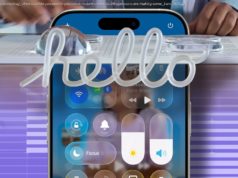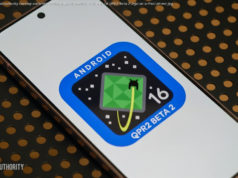Android 16 will launch in 2025, but we already have a clue about some of the new features that it could bring. Check them out!
Google switched things up with Android 15 when it decided to decouple the platform update from the Pixel 9 series. That decision gave both the software and hardware their own breathing room and independent timelines. With the official stable Android 15 update now out for the Pixel lineup, it’s time to look forward to what Google is cooking up for Android 16. Here’s what we know about Android 16 and the features we expect to see in the upcoming update in 2025.
Main index to primary sections:Android 16: Name
Google used to name Android versions with dessert codenames, but it strayed away from that tradition with the release of Android 10, choosing to stick with only the version number for all future releases. Consequently, Android 16 will be known simply as “Android 16,” with no dessert codename officially used.Android 16 release timeline
Google has confirmed that Android 16 is coming earlier than usual, corroborating our release date leak. The company has officially announced that the next major release of Android will launch in Q2 2025. This pertains to Android 16, indicating we could see a launch in April, May, or June 2025. A recent leak also revealed that the Android 16 release is set for June 3.
Further, Google has also mentioned its intentions of releasing more minor updates to the Android OS. For this, Google has planned a minor release in Q4 2024, i.e., for Android 16, presumably taking the shape of Android 16 QPR2.
Google has also mentioned that it will “soon begin the developer preview and beta program for the Q2 major release”
This is a stark departure from Android’s history, as Google usually releases major versions of Android in Q3 or Q4 of each year. But there was nothing forcing Google to follow this timeline — the company was merely following a release cadence it had settled in over more than a decade.
Moving the major release forward to Q2 will let Google “better align with the schedule of device launches across [its] ecosystem, so more devices can get the major release of Android sooner.” This will hopefully mean next year’s Google Pixel 10 series will launch with Android 16 instead of Android 15, for example. For more information, you can check out our articles to learn more about how Google was able to move Android 16’s release date and how Android’s faster release schedule will affect apps.Android 16: Leaked and upcoming features
While Google has not yet shared any details about Android 16, we can start painting a picture of what we will get with the next update, thanks to Google’s QPR updates.
The Android platform follows an annual release schedule, which OEMs and the world at large have access to. Google also follows a second public release schedule for its Pixel devices in the form of QPR updates. QPR refers to Quarterly Platform Release, which is an update track where updates are released once every three months (quarter). So, we generally get an annual Android platform update on Pixels, followed by three QPR releases, and then the next annual Android platform update.
While the features included in the Android platform update are final and available to the world, features released in the QPR updates are available to Pixel devices until the next Android platform update incorporates them. Further, Google also runs a separate beta program for the QPRs months in advance.
This gives us situations where we can try out new features that are coming to Android 16 (by checking them out in Android 15 QPR1 betas) before the stable Android 15 update is even launched! Further QPR betas give us even more features that can be chalked to the next platform release.
As a result, we have a list of features that are coming to upcoming Android 15 QPR releases for Pixel devices, which are also likely to be added to the next Android platform update, Android 16. Let’s check them out!
All leaked and upcoming features in Android 16:
Note: Features marked exclusively for Pixel devices could arrive in Android 15 Quarterly Platform Releases too.
We’ve talked about desktop windowing before as a leak, but Google officially introduced the feature in Android 15 QPR1 Beta 2 for the Pixel Tablet. Google’s announcement doesn’t mention the release timeline, but we expect to see the feature in the wider Android 16 release.
Desktop windowing allows users to run multiple apps simultaneously and resize app windows, just like we’re used to doing on conventional desktops.
Google has fixed the taskbar’s position to the bottom of the screen. It can now show running apps and apps pinned by the user. There is also a new header bar, which houses window controls.
In addition to the announced feature, there’s a new hidden toggle called Enable desktop mode on secondary display, which replaces the old Force desktop mode toggle.
Android 15 Beta 3 included clues for a redesigned Settings homepage, but the changes didn’t go live in later betas. The new settings layout did go live in Android 15 QPR1 Beta 2, indicating that it is possibly on track for an Android 16 release.
On the left is an example of how the top-level page looks on Android 14 and the right image shows the new layout in Android 15 QPR1 Beta 2.
As we learned from clues within Android 15 QPR1 Beta 3, Android 16 could introduce Rich Ongoing Notifications, a new API that lets apps show more than just an icon in the status bar. The API will let apps create chips with their own text and background color that live in the status bar, sort of like the new screen recording chips (mentioned in the later parts of this article). It’s likely that tapping these chips will open some sort of dialog provided by the app that shows more information about the ongoing notification.
For example, here’s a gallery that shows what the Rich Ongoing Notifications API could be used for in Android 16, using mock notifications for various apps like Uber, the United Airlines app, and the Clock.
The feature appears inspired by iOS’s Dynamic Island, but it predates the feature. Android 12 added an API that lets dialer apps show the duration of an ongoing call in a status bar chip a full year before Apple introduced its Dynamic Island feature. Android 16 opening up status bar chips to all apps would be a major expansion of the feature.
People who own and use multiple Android devices can relate to the notification flood that arrives whenever they boot up the less frequently used device. Right at boot, after the device establishes its internet connection, you’ll receive all notifications that weren’t delivered to this device, even if you have checked out the notifications from your other device.
Android 15 QPR1 Beta 2 changed the way Android handles these older notifications. The system now rejects notifications that are more than two weeks old. These older notifications will only show some details to let you know which apps or contacts to check up on, but they will no longer alert you with a sound or vibration, or even show the full notification contents.
If you are bothered by just how large the heads-up notifications can be when watching full-screen content, then Google is working on a solution. We spotted clues for compact heads-up notifications in Android 15 Beta 4, and the feature became more widely available with Android 15 QPR1 Beta 2.
You can see the compact layout in the second set of notifications below.
Most of the text in the notification is truncated, and any embedded images are hidden by default until you tap the dropdown arrow to expand them. However, the notification icon, notification title, and reply button are still shown for messaging apps like Telegram.
Android 15 Developer Preview 1 included a feature called Notification cooldown, located at Settings > Notifications. When enabled, this feature would gradually lower the volume of successive notifications coming from the same app. The feature prevents your phone from going off wildly when you receive a lot of notifications very quickly.
However, Google removed the feature from Android 15 Beta 1. The feature has not returned yet, but there’s evidence within Android 15 QPR1 Beta 2 that it has not been abandoned.
Android 16 could improve the screen recorder and screen caster indicator chips. We spotted and activated the change in Android 15 Beta 4.2, and the chips became more widely available in QPR1 Beta 2, which gives us hope for it arriving on Android 16.
Starting with the changes, the new chips for screen recording and screencasting will give you a timer right in the status bar.
They will also let you stop the screen recording or screencasting session without needing to pull down the status bar. Tapping on the chip will open a dialog that will let you stop the session.
There’s also a different icon now to indicate when a third-party app requests to record or cast the screen. The dialog more prominently asks you whether you want to “share your screen” rather than “start recording or casting.”
The experience is fairly functional, so we’re hoping to see it go live for the wide platform with Android 16.
Quick Settings is in for an overhaul with Android 16. Starting off, Google is testing a new dual shade design for Android 16 that separates the Quick Settings panels from the notification shade, which we managed to activate in Android 15 QPR1 Beta 2.
Pulling down the status bar once still brings down the notifications panel like before, but the panel now takes up about a quarter of the screen rather than the entire thing. While you can’t see any Quick Settings tiles anymore in the new notifications dropdown, you can see the app that’s underneath the panel.
Pulling down the status bar a second time no longer brings down the Quick Settings panel. Instead, the Quick Settings panel is accessed by pulling down the status bar with two fingers.
After pulling the Quick Settings panel down, you can swipe left or right between pages to see all your tiles. The brightness bar still appears at the top, but now has a text label and shows the brightness level as you adjust it, similar to the new volume sliders in Android 15. Most Quick Settings tiles have been made smaller so more of them can fit on one page, which is a welcome change.
Here’s a video that demonstrates the new notification and Quick Settings panels described above:
Flexiglass is the internal codename for the rearchitecting that Google is doing to SystemUI to make it more stable.
With Android 15 QPR1 Beta 3, we spotted more changes.
Домой
United States
USA — IT Android 16: Expected features, codename, leaks, release date, and everything else we...






